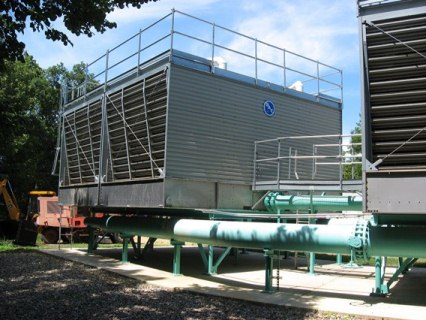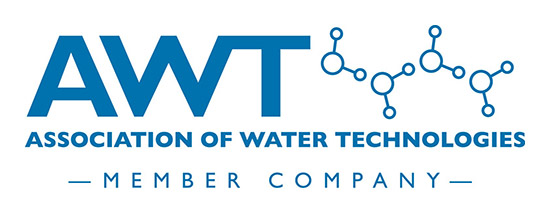
Cooling Tower Maintenance: Keeping Your System Running Smoothly
Cooling towers are essential components in many commercial buildings and industrial facilities. They play a critical role in keeping spaces and process water cool. However, like any complex system, cooling towers require regular maintenance to function efficiently and safely. Without proper care, cooling towers can become susceptible to fouling, which can lead to inefficiencies, breakdowns, and even health risks. A well-designed chemical treatment program, combined with a thorough maintenance plan, is essential to keep your cooling tower operating effectively throughout the year.
The Importance of Cooling Tower Maintenance
A well-maintained cooling tower is crucial to the efficiency and safety of your facility’s HVAC systems and processes. Regular maintenance ensures that your tower remains functional, efficient, and safe, reducing the risk of unexpected failures and extending the life of your equipment.
1. Performance Preventive maintenance is the best way to catch potential issues before they cause significant wear and tear on your cooling tower. Over time, neglecting maintenance can reduce your tower’s overall lifespan. A comprehensive maintenance program helps identify problems early, allowing for prompt corrective action to keep your cooling tower in optimal working condition.
2. Efficiency Maintenance not only prevents malfunctions but also optimizes the performance of your cooling tower. When all components are clean and functioning correctly, your tower can cool your building as needed without wasting energy. Issues like fouled fill, blocked distribution nozzles, and buildup of scale or debris can force your cooling tower to work harder, leading to higher running costs. Additionally, fouling in the basin can lead to under-deposit corrosion, causing irreversible damage to the cooling basin.
3. Safety Open recirculating systems, such as those used in cooling towers, are common areas where harmful pathogens like Legionella can grow. A robust maintenance program should include cleaning practices that remove potential deposits and buildup, minimizing the risk of microbiological activity that can pose health hazards.
How to Maintain a Cooling Tower
Maintaining a cooling tower involves several key cleaning processes and inspections. Establishing a well-defined maintenance process ensures that each scheduled procedure is effective. Below are the essential steps to follow regularly:
1. Consult the Experts Refer to your system’s documentation and consult with equipment suppliers for any unit-specific precautions or procedures. It’s also advisable to consult with water treatment professionals before adding any products to your system to avoid undesired chemical reactions.
2. Inspect the Tower Start by inspecting the entire tower to identify areas that require immediate attention, such as cleaning or repairs. While your maintenance routine may include standard steps, the inspection will reveal which areas need extra focus.
3. Follow Safety Procedures Adhere to safety guidelines, such as those provided by the Occupational Safety and Health Administration (OSHA), for handling hazardous energy sources. Proper lockout/tagout procedures for pumps and fans are crucial to prevent accidents during maintenance. Additionally, always wear appropriate protective gear to safeguard against airborne bacteria and other hazards.
4. Disinfect to Eliminate Bacteria Given the risks associated with Legionnaires’ disease, disinfection should be a priority during each maintenance cycle. Follow the guidelines from OSHA, the Environmental Protection Agency (EPA), and the Centers for Disease Control (CDC) on how to disinfect effectively. Choose a disinfectant product designed for cooling towers that can kill up to 99.9% of Legionella bacteria.
5. Remove Fill Deposits Scale buildup in cooling towers can significantly impact performance. The fill is the primary surface responsible for passing air into the system and cooling the water. Regularly cleaning the fill and removing deposits ensures that your tower operates efficiently. Be cautious when using high-pressure nozzles, as they can damage the tower fill, leading to performance issues and the need for replacement.
6. Clear the Basin and Other Components of Sludge Sludge is another common issue in cooling towers that can cause performance problems. Use cooling tower vacuums to remove sludge from the basin efficiently. Ensure that the selected drainage method is approved for the water and debris being discharged, considering factors such as pH and conductivity.
7. Inspect and Clean Heat Exchange Tubes Debris, scale, and biofilm can accumulate in heat exchange tubes, leading to fouling and reduced performance. The extent of cleaning required will depend on the quality of your water and the type of substances present in the system.
8. Check Airflow Proper airflow is critical to cooling tower performance. Regularly inspect and maintain components such as fans, gearboxes, and other parts to ensure that airflow remains consistent and effective.
9. Examine the Water Pump The water pump is responsible for moving water throughout the system. Regularly lubricating the water seal, bearings, and pump can help maintain efficiency and reduce long-term operating costs.
10. Maintain a Regular Schedule Consistency is key when it comes to cooling tower maintenance. While not every scheduled maintenance session will require extensive cleaning or repairs, sticking to a regular schedule is crucial. A twice-yearly maintenance program is generally reliable, but more frequent checks may be necessary depending on the conditions in your system.
By following these maintenance steps, you can keep your cooling tower operating efficiently and safely, reducing the risk of costly breakdowns and ensuring the longevity of your equipment.
Ensure Your Cooling Tower is Running at Peak Efficiency with Expert Help from Glacier Laboratories
Don’t let poor maintenance compromise your cooling tower’s performance.
Our team is ready to assist you with everything from inspections to chemical treatment plans, ensuring your system operates efficiently and safely year-round.
to schedule a consultation and discover how we can help extend the life of your cooling tower while reducing operational costs.

